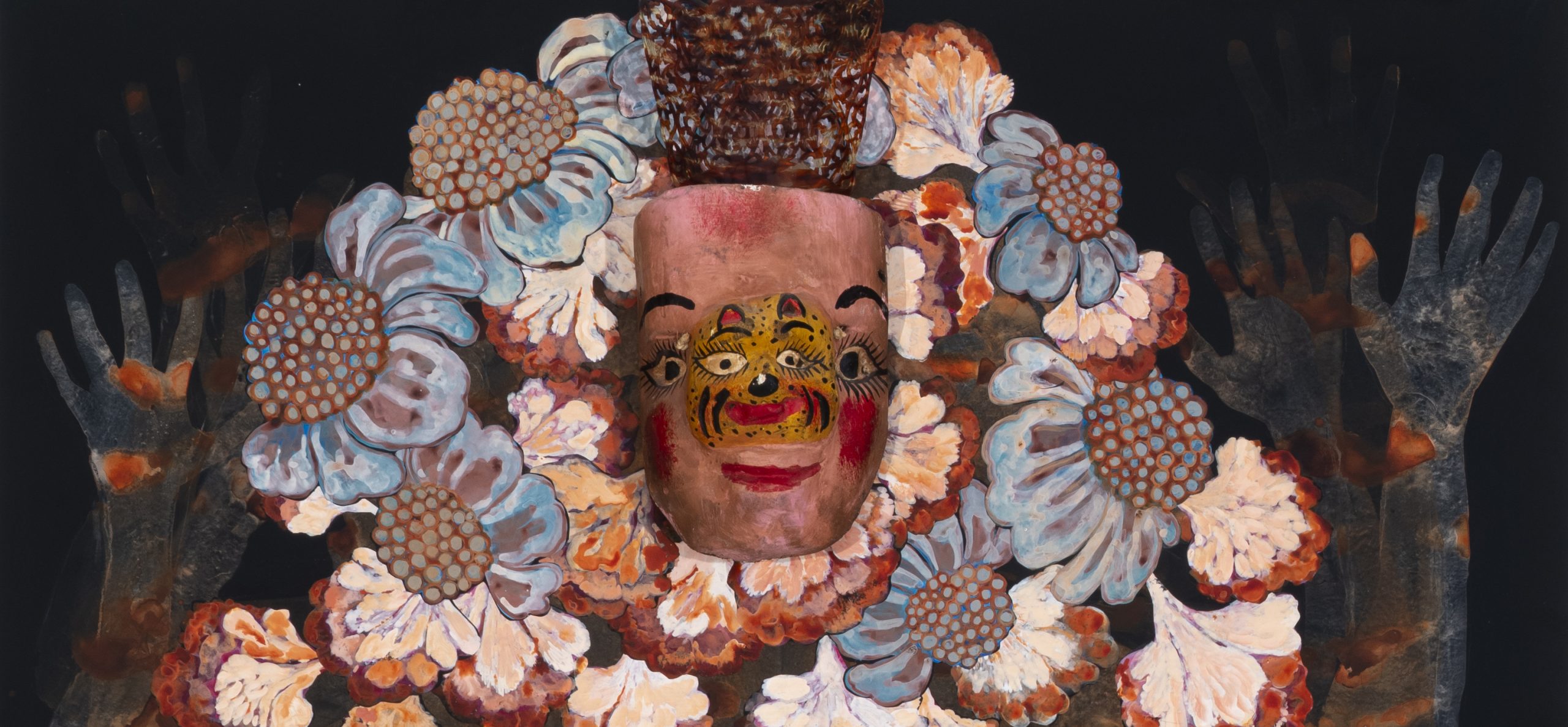

Nancy Friedemann-Sánchez is a Colombo-American, mid-career artist with an interdisciplinary practice. She grew up in Colombia as the child of a Colombian and a United States citizen and migrated to the US as an adult. Her art is about the curious and intense experience of having physically migrated, yet still having a piece of herself rooted in Colombia. She is creating an intersectional feminist visual novel that is a multifaceted project comprised of paintings, sculptures, objects, and mixed media that together—and in different voices—weave a synchronicity of dialogues, passages, and punctuations about hybridity and cultural ownership.
She is in the Elizabeth A. Sackler Center for Feminist Art; she participated at the 20 Congreso Internacional: La Experiencia Intelectual de las Mujeres en el Siglo XXI in 2012 in Mexico City. Shows include Utah Museum of Contemporary Art, The Nerman Museum of Contemporary Art, Museum of Contemporary Art, North Miami, Blue Star Contemporary, The Bemis Center for Contemporary Arts, La Bienal de Cuenca, Ecuador, Sheldon Museum of Art at the University of Nebraska, Joslyn Art Museum, Portland Museum of Art, El Museo del Barrio, and Bronx Museum of the Arts.
She was awarded the Doctorow Prize in Painting, a Nebraska Arts Council grant, a Smithsonian Artist Reseach Fellowship, a Puffin Foundation grant, a Pollock-Krasner Foundation grant, a National Association of Latino Arts and Cultures grant, and was nominated to the Joan Mitchell Foundation, the United States Artists fellowships, the Rema Hort Mann Foundation, and to the Anonymous Was A Woman Award. She was a resident at Art Omi, Fountainhead, Tamarind Institute, Yaddo, Gasworks, Bemis Center for Contemporary Arts, and Bronx Museum of the Arts.
Visit Nancy Friedemann-Sánchez’s website at NancyFriedemann.com
Casta Paintings: Identity Constructed/Deconstructed
By Kaylee Lass
Curatorial associate and operations manager, Halsey Institute of Contemporary Art
Nancy Friedemann-Sánchez tells stories of our shared global histories through her artwork. She explores our world through the material culture left from generations past—seeking portals between then and now in an effort to understand who we’ve become through who we’ve been. Casta Paintings is no exception to this keen interest of the ways in which people shape identities. Individuals build a sense of self with familial and collective experiences influenced by and in resistance to cultural identity. The power structures that shape cultural identity are inherently imbalanced, and thus often perpetuate stereotypes. In this series, Friedemann-Sánchez confronts a racist eighteenth-century genre of painting by Spanish colonizers that endeavored to taxonomize miscegenation and glorify a proximity to whiteness in Latin America.
Though used for only a short period in history, the assumptions and terms defined by casta paintings still carry weight in the Americas. The chart-like layout utilized in the genre “identified” sixteen racially mixed families documented in New Spain. The subjects were presented as if they were objects in cabinets of curiosities created for an elite European audience. This fixed system of racial hierarchy determined social and economic class, signaled by the clothes they wore, their domestic environment, and the color of their skin.
Nancy Friedemann-Sánchez’s contemporary casta paintings take inspiration from this problematic genre to reflect on the legacy of colonialism that lingers in the racial and social discrimination and marginalization present in her home country of Colombia and here in the United States. The life-size ink tracings of Latina women take up space—forcing you to acknowledge their presence and giving them a place of dignity. Layers of tracings indicate variations in skin tone. Their position is familiar to any air traveler to or within the United States; a stance imposed by TSA that the artist relates to being colonized, surveilled, and vulnerable. In that moment, your body is not your own as others scrutinize it as safe or unsafe, fit or unfit.
Each figure is paired with a mask and comb and adorned with painted florals. Friedemann-Sánchez began rescuing Latin American masks from second-hand sales online with a desire to recover pieces that should be in museums and give them a new place to speak. The artist selected masks for each work by considering contemporary meanings and her own interpretations of the labels defined by historic casta paintings, often contradicting the motives of colonizers. For example, the mask assigned for Castiza (2017) is a depiction of whiteness made in Mexico by someone who is not white, or the mask for Española (2019-2021), which depicts an indigenous person to counter the once common rejection of indigenous ancestry prevalent in Latin America. The masked figures are also wearing peinetas. These Spanish combs were worn for special occasions associated with a woman’s entrance into society. Together, the masks and combs indicate a woman’s agency and empowerment to define their own identity despite societal labels.
Painted flowers fall around the figures, representing a confluence of cultures and denial of the inevitable hybridity that resulted from colonization. Friedemann-Sánchez pulls iconographies from Spanish colonial floral paintings and Colombian mopa mopa or barniz de Pasto, an indigenous lacquer technique used to decorate wooden objects. Spanish interest in barniz de Pasto was primed by the trade of Chinese lacquer, silk, and porcelain products from which Europeans lifted styles for chinoiserie, a Western design motif. The barniz de Pasto tradition lives on primarily in objects not unlike souvenirs. By elevating mopa mopa from a small object to a large scale in her paintings, she gives visibility to historical practices that are reduced as decorative and created anonymously.
Casta Paintings serves as the fifth chapter of Nancy Friedemann-Sánchez’s visual novel, Mestiza Dos Veces. The larger work sheds light and gives reason to cultural memory using paintings, sculptures, objects, and collages to interweave personal narratives that address larger narratives, always considering and deconstructing dominant ideologies. Each chapter is intended to be examined in a non-linear fashion, speaking to one another in different ways. The collective tells a story of hybridity as a result of migration and questions concepts of cultural ownership, focusing not on dualities but instead the liminal space between.